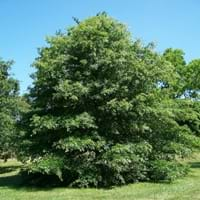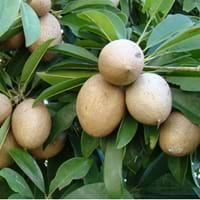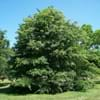Life Span
Biennial
Perennial
Origin
United States, North-Central United States, Canada
Hybrid origin, Mexico, Central America, South America
Types
The White Oaks, Chestnut Oak, Bur Oak
Not Available
Habitat
Humid climates
Coastal Regions
USDA Hardiness Zone
4-7
11-15
Sunset Zone
Not Available
A1, A2, A3, H1, H2, 1a, 1b, 2a, 2b, 3a, 3b, 4, 5, 6, 7, 8, 9, 10, 11, 12, 13, 14, 15, 16, 17, 18, 19, 20, 21, 22, 23, 24
Habit
Spreading
Upright/Erect
Flower Color
Red, Light Green
Yellow
Flower Color Modifier
Bicolor
Bicolor
Fruit Color
Chocolate
Red
Leaf Color in Spring
Pink, Sienna
Green, Dark Green
Leaf Color in Summer
Dark Green
Green, Dark Green
Leaf Color in Fall
Red, Purple, Burgundy, Dark Red
Green, Dark Green
Leaf Color in Winter
Not Available
Green, Dark Green
Leaf Shape
Y-shaped
Ovate
Plant Season
Spring, Summer, Fall
Spring, Summer, Fall
Sunlight
Full Sun
Full Sun
Type of Soil
Clay, Loamy, Moist, Sandy, Well drained
Loam, Sand
The pH of Soil
Acidic
Neutral
Soil Drainage
Well drained
Well drained
Bloom Time
Spring, Late Spring
Indeterminate
Tolerances
Drought
Drought
Where to Plant?
Ground
Container, Ground
How to Plant?
Seedlings
Grafting, Seedlings
Plant Maintenance
Medium
Medium
Watering Requirements
Average Water Needs, Needs watering once a week, occasional watering once established, Requires watering in the growing season, Water daily during growing season, Water more in summer
Needs more water during establishment
In Summer
Lots of watering
Lots of watering
In Spring
Moderate
Moderate
In Winter
Average Water
Average Water
Soil pH
Acidic, Neutral
Neutral
Soil Type
Clay, Loam, Sand
Loam, Sand
Soil Drainage Capacity
Well drained
Well drained
Sun Exposure
Full Sun
Full Sun
Pruning
Prune for shortening long shoots, Prune if you want to improve plant shape, Prune when plant is dormant, Remove damaged leaves, Remove dead branches, Remove dead leaves, Remove short branches
Pinch or prune as they grow to promote branching and bushiness
Fertilizers
All-Purpose Liquid Fertilizer
14-14-14 Fertilizer, Compost
Pests and Diseases
Red blotch
Anthracnose, Aphids, Red blotch, Rust
Plant Tolerance
Drought
Heat Tolerance, Salt and Soil Compaction
Flower Petal Number
Not Available
Single
Fragrant Bark/Stem
No
Yes
Foliage Texture
Medium
Medium
Foliage Sheen
Glossy
Matte
Attracts
Birds, Hummingbirds, Squirrels, Woodpeckers
Aphids, Not Available, Squirrels
Allergy
Not Available
Stomach pain, Vomiting
Aesthetic Uses
Showy Purposes
Used in parkland
Beauty Benefits
Not Available
Anti-ageing, Blackheads, Reduce Bruises
Environmental Uses
Air purification, Shadow Tree, Shelter for wildlife
Shadow Tree, Soil protection
Medicinal Uses
Not Available
Dehydration, Diabetes, Diarrhea, Nutrients, Weight loss
Part of Plant Used
Tree trunks
Fruits
Other Uses
Air freshner, Grown for shade, Used as firewood, Used in Furniture, Used in paper industry, Wood is used for making furniture, Wood is used fore making tools, Wood log is used in making fences
Application in Handicrafts, Food for animals, Showy Purposes
Used As Indoor Plant
No
No
Used As Outdoor Plant
Yes
Yes
Garden Design
Shade Trees
Edible, Herb, Vegetable
Botanical Name
QUERCUS ellipsoidalis
Manilkara zapota
Common Name
Northern Pin Oak
sapodilla , chikoo, Sapota
In German
Pin-Eichen
Breiapfelbaum
In French
Pin Oak
Sapotillier
In Spanish
pin Oak
chicle
In Greek
pin Oak
sapodilla
In Portuguese
Pin Oak
sapodilla
In Polish
pin Oak
Pigwica właściwa, sapodilla
In Latin
Quercus
sapodilla
Phylum
Not Available
Magnoliophyta
Class
Magnoliopsida
Magnoliopsida
Family
Fagaceae
Sapotaceae
Clade
Angiosperms, Eudicots, Rosids
Angiosperms, Asterids, Eudicots
Tribe
Not Available
Sapoteae
Subfamily
Not Available
Sapotoideae
Importance of Pin Oak and Sapodilla
Want to have the most appropriate plant for your garden? You might want to know the importance of Pin Oak and Sapodilla. Basically, these two plants vary in many aspects. Compare Pin Oak and Sapodilla as they differ in many characteristics such as their life, care, benefits, facts, etc. Every gardener must at least have the slightest clue about the plants he wants to plant in his garden. Compare their benefits, which differ in many ways like facts and uses. The medicinal use of Pin Oak is Not Available whereas of Sapodilla is Dehydration, Diabetes, Diarrhea, Nutrients and Weight loss. Pin Oak has beauty benefits as follows: Not Available while Sapodilla has beauty benefits as follows: Not Available.
Compare Facts of Pin Oak vs Sapodilla
How to choose the best garden plant for your garden depending upon its facts? Here garden plant comparison will help you to solve this query. Compare the facts of Pin Oak vs Sapodilla and know which one to choose. As garden plants have benefits and other uses, allergy is also a major drawback of plants for some people. Allergic reactions of Pin Oak are Not Available whereas of Sapodilla have Stomach pain and Vomiting respectively. Having a fruit bearing plant in your garden can be a plus point of your garden. Pin Oak has showy fruits and Sapodilla has showy fruits. Also Pin Oak is not flowering and Sapodilla is not flowering . You can compare Pin Oak and Sapodilla facts and facts of other plants too.





